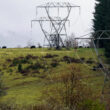Editor:
I know little or nothing of geology, petroleum or chemistry. That being said, I believe that while we will never see the quantities of petroleum that we have had in the past, if the world goes on in its’ merry way as it has for eons, there will always be oil and gas.
And I believe with proper actions we can both benefit the ecology and increase the future supply of these products. There may also be other added benefits.
Ever since the sixth grade, when I pointed out the similarities of the East Coast of the Americas and the West Coast of Europe and Africa (heresy in those days) and asked, “Does anyone really believe that they weren’t joined?” I have had a healthy disrespect for the experts who expound conventional wisdom from lofty platforms.
The then (and now!) current wisdom was that the oil deposits came from the carcasses of rotting dinosaurs, which were killed by effects from a meteor (crater still visible) which impacted on the Yucatan Peninsula.
The concept just does not ring true and has continued to bother me. If the crater is still visible, where are the piles of bones and puddles of oil that should be still lying around on top of the ground?
I have the feeling that the “experts” have no good explanation and have just settled for this one.
When I was a kid, dirt roads were routinely covered with used oil and I cannot remember where it ever sank in more than an inch or so.
How did the oil from the rotting dinosaurs sink thousands of feet underground through impenetrable layers of rock and clay?
There are a few places where layers are fractured, like the La Brea Tar Pits and a couple of places on Weyerhaeuser east of Coos Bay where I have seen oil bubble out of the ground. But I know of no place where there is any evidence that petroleum has “soaked” in to such depths.
All of the above made me doubt the current explanation but I had no acceptable alternative until a couple of years ago when I got a NatGeo World Map showing, among other things, the oceans without water.
It was rather a large map, so I posted it on the bathroom wall where I would study it at least once a day. I concentrated on the Atlantic Ocean area, since it best demonstrates the condition which drew my interest. Similar conditions exist in all oceans and seas.
The Earth (as most know) is like an orange with a mantle (rind) covering a layer of molten lava on which various “plates” float and move. Nowhere is this more apparent than in the Atlantic Ocean, where there is a mid-ocean ridge of volcanos stretching from the Arctic to the Antarctic and beyond.
This splits the ocean floor into two plates which, forced by the volcanic action, move to the East and West and ‘subduct’ (slide under) under the Americas and European plates.
The best that I can figure is that the floor of the Atlantic Ocean has always been covered by water, thus ensuring that no large prehistoric land animals were ever present to leave their carcasses and provide substance for future oil deposits.
There were, however, innumerable aquatic plants and animals to provide organic material that could be manufacture by natures forces into future petroleum deposits which are still present. I understand that it reaches a couple of hundred feet in depth.
As the ocean plates moved east and west to the Americans and Europe/Africa all the organic material which had ‘silted’ down on the ocean floors was carried down into the subduction zones (roughly following coastlines).
As the ocean floor was pushed under the land into the molten lava area it melted and was assimilated into the lava. The organic material carried by the plate was heated to an extreme temperature and mixed with superheated steam forming a “slurry.”
There is no fire since there is no oxygen.
The mantle on both sides of the “rift” is fractured and cracked, allowing the slurry to percolate up through the rift until it comes to an impervious layer where it remains today ripe for exploitation.
Interesting theory, you might say, but where is the proof? It is right off the coast of Oregon in the Cascade subduction zone, where scientists have found nutrient-rich springs spouting up along the subduction rift. This would only occur if the conditions described above existed.
We already recycle organic material in landfills by covering it with plastic and recovering the gas for use in generating power. I suggest that we bundle all organic material (including plastic), in plastic, and dump it into these subduction zones, removing pollution and garbage to an environment where it can be recycled by nature and not be a hazard.
Furthermore, if we ever reach the point where we can predict areas of the subduction zone which are most earthquake-prone, we could concentrate the bundled material into those zones – greasing the skids, so to speak, and perhaps reducing the severity of subsequent quakes.
William C. Curtis
Sweet Home




